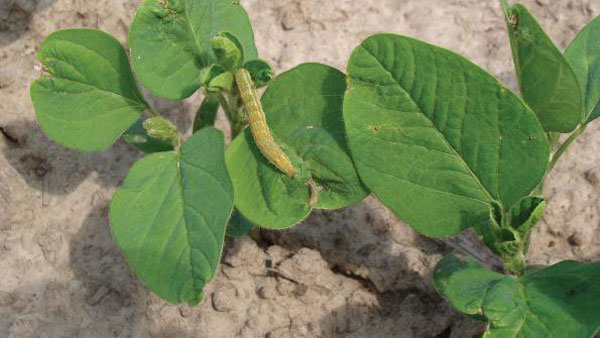August 16, 2013

Corn earworm moth activity is definitely on the rise in Virginia.
We are now catching 20-30 per night in our traps compared to 4 or 5 per night at this time last week. We are not sure how this will progress. A lot will depend on the weather, and eventually, corn harvest. We will keep posting updates.
Peanuts:We are beginning to find just a few worms in peanut fields — way below any reasonable threshold
(See Mixed worm populations could be heading for Virginia peanut crop for more details).
Sorghum:A few worms are beginning to show up in sorghum heads (See http://www.sripmc.org/Virginia/View.cfm?lngNewsID=1019).
Soybeans:We are getting reports of a few worms in soybean fields but not at threshold levels, and not threatening the seed.
Cotton:Although we have found a few corn earworm eggs, we are finding almost no worms. This could be the year when the BG2 and WideStrike provide enough protection, without additional foliar sprays.
Pyrethrodi resistance:Keep in mind that I use the term resistance loosely. We cannot prove/disprove actual resistance using the AVT (Adult Vial Testing) method, only determine the percent that survive the pyrethroid challenge.
So, where do we stand this year? If you open the file (More) you can get a quick comparison of where we are compared to last year. So far we are seeing only about 30 percent survivorship.
But also notice that the number of moths tested to date is very low, which could bias our results. Is 30 percent survivorship enough to warrant a shift to a non-pyrethroid. My answer is, it depends.
My rule of thumb is if a field is at or just above the threshold (check that for each crop), a pyrethroid applied at the highest labeled rate, using a spray system that achieves good plant coverage, will do well.
But, if a field is 3 to 4 times the threshold, or higher, a non-pyrethroid will be needed.
More from Southeast Farm Press
Peanut diseases surge in areas of excessive rainfall
Soybean rust showing up a month early in north Alabama
Demand heavy for stocker calves, yearling cattle
Tennessee's agritourism industry getting bigger
You May Also Like




